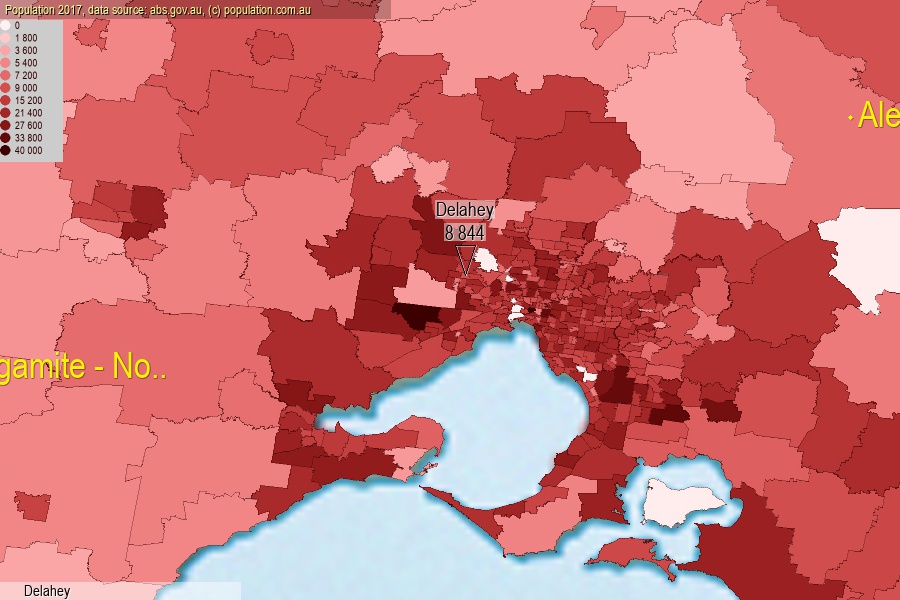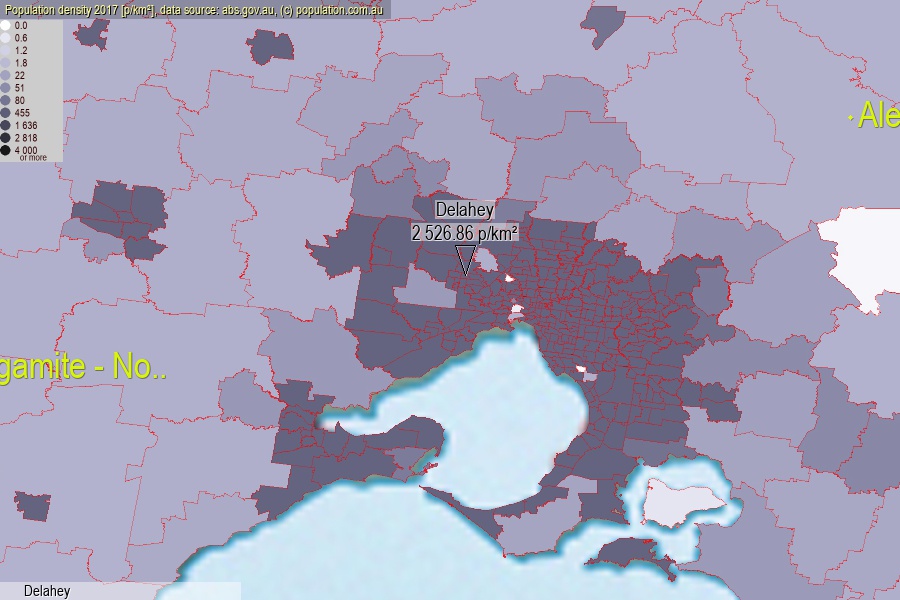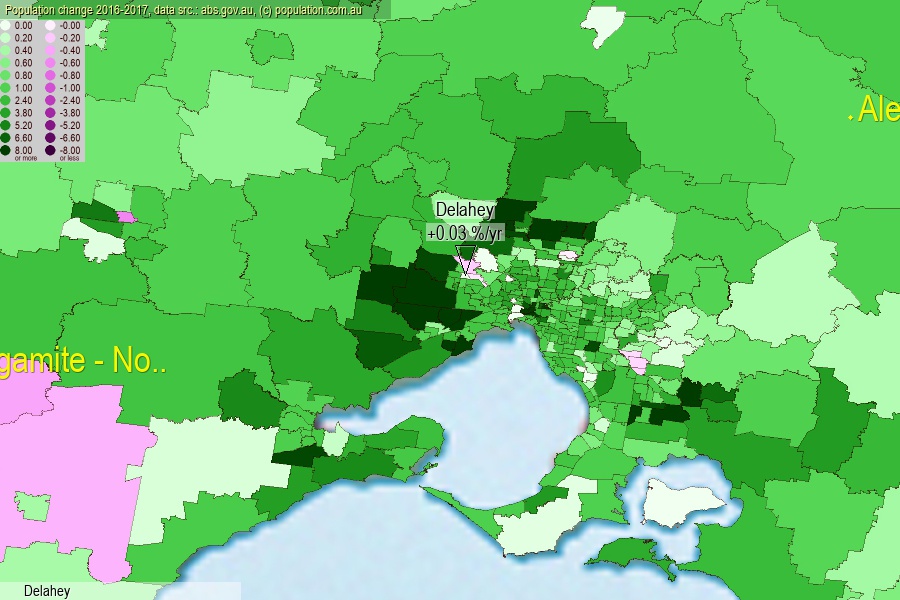 population.com.au
population.com.auLast official estimated population of Delahey (as Statistical Area Level 2) was 8 844 people (on 2017-06-30)[2]. This was 0.04% of total Australian population and 0.138% of VIC population. Area of Delahey is 3.50 km², in this year population density was 2 526.86 p/km² . If population growth rate would be same as in period 2016-2017 (+0.03%/yr), Delahey population in 2025 would be 8 868. [0]



Click to enlarge. Delahey is located in the center of the images.
Population [people], population density [p./km²] and population change [%/year] [2]
View borders » (new window) [4]
[1991-1992] +39.24 %/Yr.
[1992-1993] +27.86 %/Yr.
[1993-1994] +28.58 %/Yr.
[1994-1995] +17.58 %/Yr.
[1995-1996] +14.39 %/Yr.
[1996-1997] +10.92 %/Yr.
[1997-1998] +9.74 %/Yr.
[1998-1999] +7.79 %/Yr.
[1999-2000] +6.71 %/Yr.
[2000-2001] +4.16 %/Yr.
[2001-2002] +4.12 %/Yr.
[2002-2003] +3.30 %/Yr.
[2003-2004] +2.15 %/Yr.
[2004-2005] +1.16 %/Yr.
[2005-2006] +1.06 %/Yr.
[2006-2007] -0.08 %/Yr.
[2007-2008] -0.04 %/Yr.
[2008-2009] -0.39 %/Yr.
[2009-2010] -1.19 %/Yr.
[2010-2011] -1.43 %/Yr.
[2011-2012] +0.09 %/Yr.
[2012-2013] +0.17 %/Yr.
[2013-2014] +0.17 %/Yr.
[2014-2015] +0.09 %/Yr.
[2015-2016] +0.29 %/Yr.
[2016-2017] +0.03 %/Yr.
[0] Calculated with linear interpolation from officially estimated population
[1] Read more about SA2 and Australian Statistical Geography Standard (ASGS) on abs.gov.au
[2] Population data from Australian Bureau of Statistics (Population and density: 2017; change: 2016-2017)
[3] Digital Boundaries: Australian Statistical Geography Standard (ASGS) 2016.
[4] Border coordinates are simplifyed using Ramer-Douglas-Peucker algorithm.